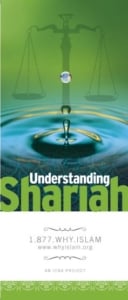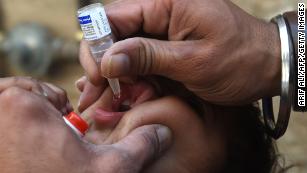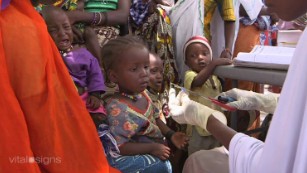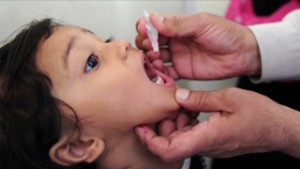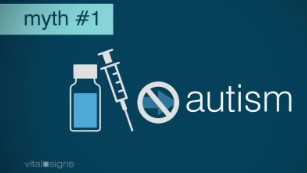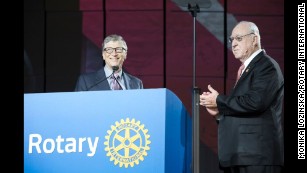But let us take a step back and understand what exactly transpired on Friday July 20. As per the dictionary, a motion of no-confidence is a statement or vote which states that a person(s) in a position of responsibility is no longer deemed fit to hold that position, perhaps because they are inadequate in some respect, are failing to carry out obligations, or are making decisions that other members feel is detrimental.
These are serious charges. As a parliamentary motion, a no-confidence move tells to the head of state that the elected parliament no longer has confidence in (one or more members of) the appointed government. A no-confidence motion is directed against the cabinet and if it is supported by most of the members of the Parliament (Lok Sabha in the case of India), the Government is bound to vacate the office. Thus, raising a no-confidence motion is a serious move which must be handled with decorum, responsibility and maturity. In contrast, Friday’s events made a mockery of a serious practice. A no-confidence motion, when used judiciously, helps keep the spirit of democracy alive. Unfortunately, the so-called motion that happened on July 20 was instrumental in mocking the spirit of democracy. The drama that was played out on Friday was more about optics than about anything else.
The single-point agenda for the opposition was reduced to just one slogan Modi Hatao. It is odd that in one of the most populous countries of the world there is no constructive agenda that any of the opposition parties have - no plan for poverty eradication, sanitation and health improvement, education and literacy, infrastructure development… none of this matter. The only thing that matters is that Modi should not come back to power. It is good to oppose to the Government; indeed, it is the duty of a responsible opposition to do so. But the opposition should be fact and ideology based, not person based. Friday's events clearly showed that the so-called mahagathbandhan exists for the sole purpose of ensuring that Modi does not become the PM again. What does it say when there is a fight between all the central and regional parties on one side and a lone figure on the other (because the fight is against Narendra Modi, not against the BJP)? Given that all these parties have an abysmal track record of governance and have been known to favour nepotism and corruption - the very fact that they are opposing Modi tooth and nail, seems to indicate that Modi is doing something right. Modi’s continued presence threatens them and so he must be removed. Rahul Gandhi's impassioned speech included half-truths and old, tired slogans like 'suit boot ki sarkar'. By distorting and mis-representing facts, he alluded that the Defence Minister has lied to the nation about the Rafale Deal. These are serious allegations made against a democratically elected Government. Had these allegations been made by some small-time politician addressing an election rally, one could have perhaps ignored or laughed at them. But when these allegations are made by the leader of the Congress party, the man who is being projected as the next potential PM of the country – it causes irrevocable damage to the institution called the Parliament. The Lok Sabha gets reduced to an electoral 'akhara' where the win is of the person who shouts the loudest. Specifically, with the unsubstantiated allegations over Rafale, we also cut a sorry figure in front of the French establishment and made fools of ourselves in the international media. And how can one forget the hug and the wink? There was a no-confidence motion happening in the Lok Sabha, not a family function. Hugs are for friends and families. A wink is an informal mode of non-verbal communication. The Lok Sabha is not the place for either of them. Decades of misrule cannot be erased by a symbolic, forced hug. If the Congress was serious about eradicating hate and replacing it with love, why is it that the victims of the 1984 massacres are still seeking justice? Why is it that the deprived and marginalized sections of the society are still dependent on 'sops' and 'quotas' more than 60 years after independence? Where was all this love when the country was being systemically looted by the earlier regimes, and the looting was justified as 'coalition compulsions'? When the leader of a national party speaks in the Parliament, his speech should be fact and data driven. When he reduces the level of discussions to an awkwardly given hug and a sly wink, he reduces the entire proceedings to a sham. He mocks not only the democratically elected Prime Minister, he mocks the Lok Sabha and the electorate. The low level of debate and the theatrical antics only proved that India lacks a credible Opposition and leaders who would want to make an impact for the betterment of the country. Friday, July 20 was a sad day for Indian democracy as it conclusively showed up the shallowness of some of our PM aspirants.
Aditi Kumaria Hingu is a marketing graduate from IIM Calcutta. Currently she works in the corporate sector. She comes from an army background.
Reference :http://www.sify.com/news/y-rahul-s-hug-and-wink-a-mockery-of-democracy-news-columns-sh0m3Mhbffcjh.html
अविश्वास प्रस्ताव का शब्दकोशीय मतलब
यह एक ऐसा कथन या वोट है जो किसी व्यक्ति ,व्यक्ति समूह के खिलाफ इस बिना पर लाया जाता है के वह अपने निर्धारित कर्तव्य कर्म को अंजाम नहीं दे रहा है/रहें हैं, के उसके फैसले समूह के शेष सदस्यों के अनुसार बेहद की नुकसानी पैदा कर रहे हैं।
सरकार के खिलाफ अविश्वास प्रस्ताव लाने का गंभीर अर्थ होता है यह एक गंभीर मसला होता है जो खुलासा करता है के सरकार पूरी तरह नाकारा हो गई है उसके तमाम फैसले देश को नुक्सान पहुंचा रहे हैं। देश की अस्मिता को तहसनहस करने वाले हैं।शेष सासंद इस सब का विरोध करते हैं। किसी एक व्यक्ति के खिलाफ न होकर अविश्वास प्रस्ताव पूरी केबनेट ( मंत्रीमंडल )के खिलाफ होता है।
जून २०,२०१८ को संसद में होने वाले प्रहसन प्रकरी नौटंकी को आप इसी आलोक में बूझिये :
विपक्ष का गैर -जिम्मेदाराना रवैया और उसका खुलासा माननीय सांसद कांग्रेस के कमल नाथ ये कहते हुए करते हैं मैं ऐसे ३८ अविश्वास प्रस्ताव देख चुका हूँ मेरे लिए पंचायत का काम देखना ज्यादा ज़रूरी है। और वह गैरहाज़िर रहे संसद से।
पूरे बहस मुबाहिसे के दौरान न कोई डेकोरम था न स्वीकृत मान्यताओं के प्रति आदर भाव था। यहां एक नहीं अनेक विदूषक थे जो बारहा एक ही सन्देश दे रहे थे -मोदी को हटाओ ,हमें लाओ। कैसा प्रजातंत्र और प्रजातांत्रिक मूल्य बोध।
जहां नेहरुपंथी कांग्रेस के मुखिया हद दर्ज़े का झूठ बोल रहें हैं फ्रांस के आगे भारत की नाक कटवाने से भी नहीं चुके ये नेहरू पंथी कांग्रेस के राजकुमार।और इनके भाषण के बाद तो इनकी जादुई झप्पी ने अविश्वास प्रस्ताव को जन्म दिन जैसे वैयक्तिक फंक्शन में बदलने की पूरी चेष्टा की।
'आती है खंडाला क्या' अंदाज़ में इन्होने पास बैठे अपनी ही पार्टी के एक सांसद की ओर देखते हुए आँख मार दी जो बेहद अशोभन था। क्या ये इनका विशेषाधिकार था। जिसके खिलाफ संसद के बाहर कोई कार्रवाई ही नहीं हो सकती।
और आखिर में ये शहज़ादा प्रेम का पाठ पढ़ाने लगा इसी मुख से ये भारत के राष्ट्रीय सांस्कृतिक गौरव के प्रतीक आरएसएस को भी संसद में कोस रहा था जिसका अविश्वास प्रस्ताव से कोई लेना देना नहीं था।
यही वह शख्स है जिसे हिंदुत्व से चिढ़ है जो हिंदुआतंकवाद का प्रलाप करता है जिनकी अम्मा मोदी साहब को खूनी कहतीं हैं उनके मुख से प्रेम की बातें बड़ी अटपटी सी लगती हैं।इनकी अम्मा कांग्रेस अध्यक्ष पद संभालते ही प्रखर सनातन मान्यताओं के प्रतीक पुरुष शंकराचार्य जयेन्द्र सरस्वती के खिलाफ चर्च के इशारे पर फ़र्ज़ी मामले फ्रेम करवाके उन्हें जेल में डलवा देतीं हैं।
'जब एक बड़ा पेड़ गिरता है तो धरती कांपती है' इसी राजकुमार के अब्बाजान का जुमला था यह और फिर सिखों का सरे आम कत्ले आम होता है जिसके सताये लोगों के परिवारों को आज तक भी न्याय नहीं मिला है। '१९८४ कत्ले आम 'की करतार कांग्रेस आज प्रेम की बात करती है दुहाई देती है हम तो प्रेम के प्रतीक हैं कन्हैयाँ हैं। रास रचाएंगे संसद में।
